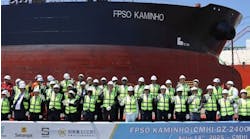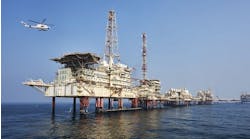The offshore industry has progressed rapidly in its ability to identify and produce remote assets, and this latest buildup in technology could be just the tip of the iceberg. Are there new ideas out there right now that will change the way the next generation explores for and produces offshore oil and gas? If so, how do we identify these ideas?
It is difficult in some cases to hear through the noise of new technology. Innovation often out steps practicality, and resistance to adopting new ideas makes the offshore sector a less than perfect proving ground. It is clearly possible that viable new concepts may become lost in the shuffle either because operators are more comfortable with both the benefits and limitations of existing systems and equipment, or because the new idea is ahead of its time, meaning out of step with the trends that lead to the problems it solves.
Still, with all the barriers out there, many strong future oriented concepts are moving forward. Among these are dual gradient drilling, expandable tubulars, floating liquefied natural gas (FLNG), and now floating oil and liquefied natural gas (FONG).
While each of these recent innovations has vast potential, the FONG solution recently brought forward by Shell may have the most impact on the overall market. It is too soon to know for sure if this concept will prove out in the field and, if so, if it will live up to its potential.
Regardless, this concept serves as a useful example of how both innovation and technological evolution combine to make assets out of what were once considered liabilities. Associated gas has been around since the start of offshore exploration. While the cost of storing or disposing of this gas has always been an issue, the environmental impact of these solutions drove the issue to the forefront. If flaring, which damages the environment, is eliminated from the options for associated gas disposal, then it changes the economics for a whole range of remote fields.
So, were these now marginal fields, mostly in frontier areas, just written off as hopeless? No, innovation was brought to bear so that not only were the existing marginal fields once again produceable, but a band of fields below these also became more attractive. With the FONG concept, the associated gas is no longer an environmental and economic liability, but an asset. The gas that had to be injected or flared will now be sold. Areas of the world with little or no infrastructure can now be developed on par with the most mature regions in the world.
Another advantage to this solution is that it allows for zero residual impact on a region. No platforms, no trunk lines, no jetties or shore facilities. None of this is needed. Additional development solution, of course, is still an option in areas where there will be sustained development, but the FONG offers an option to explore and produce a field. Then, once it has played out, to take all the surface equipment and leave. From the surface and from the shore there would be no evidence that a development program was ever conducted.
This is quite an elegant solution when considering the problem being faced was pollution from flaring gas. The solution not only eliminates flaring, but also the permanent surface facilities and other infrastructure that has an impact on the local environment. FONG isn't a cure-all. There will certainly be marginal field developments that will not include this solution. There will continue to be frontier areas that mature along traditional lines, adding infrastructure as more fields come on line, but it is worth noting that many of the fields already identified in remote areas would remain undeveloped without the introduction of revolutionary technology such as this.
It is no secret that the majority of oil is produced by a small percentage of existing fields. It would follow that as new discoveries continue to be made, the likelihood of finding unidentified giant fields continues to shrink. This would lead one to conclude that the future of energy lies not in the billion-barrel giant field, but in a broad spectrum of smaller fields in areas formerly undeveloped. To successfully exploit these resources will take an innovative mind set. The developers of FLNG and FONG should be commended for not only their vision, but their willingness to take a considerable financial risk to substantially reduce the qualifications required to make a discovery viable.


